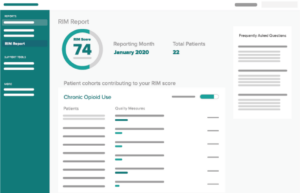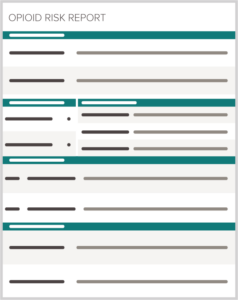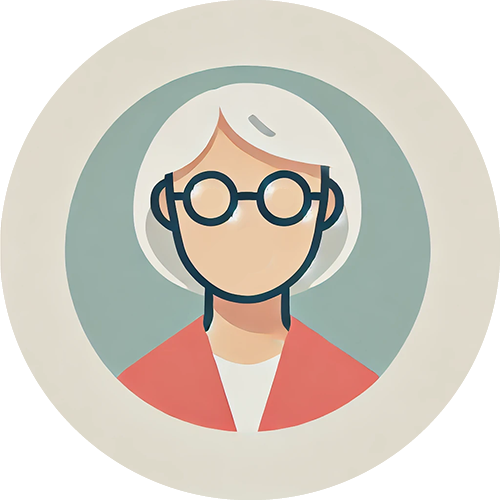Direct Provider Support
Each of these resources is supported by our Clinical Consult Services (CCS) team of clinical pharmacists, physician associates, registered nurses, and engagement specialists. The CCS team’s goal is to support you in the treatment of complex patients by applying their clinical expertise, offering detailed patient intelligence, and identifying care coordination opportunities and other relevant evidence-based solutions to support optimal patient health outcomes.
Digital Access

Access the opioid reduction tool on your phone, tablet, or laptop – before or during a patient visit.
Risk Identification & Mitigation (RIM) Report

Our Risk Identification and Mitigation (RIM) report calculates a provider’s monthly RIM score by assessing specific risk measures associated with opioid prescribing.
Opioid Risk Report

One-page report generated for patients prescribed opioids. This report also flags clinically relevant opioid related risks. This resource pairs patient specific risk with tailored clinical considerations.
HIPAA Compliance
HIPAA Compliance Sharing of protected health information (PHI) with axialHealthcare is facilitated through a Business Associate Agreement with the covered entity— the health plan. axialHealthcare’s products and services are HIPAA-compliant, including the storage, utilization and delivery of PHI used to support patient care.
Benefits of safely reducing opioids for patients
Increased
- Functionality
- Quality of life
- Chance of long-term success in chronic pain management
- Engagement in daily activities
Decreased
- Pain
- Overdose Risk
- Opioid side effects
- Poor health outcomes
Real Life Opioid Accidental Overdose
When many people think of Narcan, they imagine first responders using the life-saving drug to reverse the effects of an overdose for an illicit drug user. While this is a common use for Narcan and has saved countless lives, it has created a narrative around Narcan that has led people to believe it is a drug for those who misuse or are addicted to opioids. The below anecdotes are real accounts of providers prescribing opioids in which Narcan either did or could have saved a life.

Who: Elderly female patient
What: Chronic, stable opioid therapy
This patient had been on a consistent dose of pain medication for a long period of time and tolerated it well. She contracted Covid-19 and began experiencing respiratory depression in combination with her normal opioid. Her family called 911 and administered Narcan while EMS was in route. The patient was treated in the ED, did not suffer any further injuries, and recovered well.






Who: Elderly female patient
What: Chronic, stable opioid therapy
OUTCOME: Full recovery due to Narcan


Who: Elderly female patient
What: Chronic, stable opioid therapy
After taking a nap, this patient could not remember if she had already taken her medication upon waking, so she took what she thought was her prescribed dose although she had already taken her prescribed dose for the day. As a result, she accidentally took her husband’s medication, which was the same medication at a higher dose. She became dizzy and disoriented, and her husband was not able to help her. She was prescribed Narcan but did not fill it. This resulted in hospitalization and injury.






Who: Elderly female patient
What: Chronic, stable opioid therapy
OUTCOME: Hospitalization and injury


Who: Young male patient’s child
What: Post-op opioid therapy
This patient had a procedure requiring a few days of opioid therapy post-operatively, and he filled a Narcan prescription along with the acute pain medication that was prescribed. The medication was kept on the patient’s nightstand, and his child ended up accidentally consuming a pill. The patient administered Narcan to the child, and everyone was safe.






Who: Young male patient’s child
What: Post-op opioid therapy
OUTCOME: Full recovery due to Narcan
We see so many post-op and short duration prescriptions without the same safety measures of chronic opioids and accidents can happen even for those patients and doses that seem very safe. It is so important to have Narcan available even when stable opioid doses are in place. Accidental overdose and respiratory depression due to overdose are often the result of additional factors such as acute illness, organ disfunction and even dehydration.


Who: Young female patient
What: Acute opioid therapy mixed with Benzodiazepines
This patient had difficulty sleeping due to ongoing pain. She was seen in the ED with lethargy, slurred speech, drowsiness, and confusion. The patient was inconsistent with reporting whether she took Xanax or Klonopin. She had no suicidal ideation, so she was cleared to go home and was referred to pain management. The hospitalist who treated her in the ED prescribed Tramadol for ongoing pain until she was able to follow up with her PCP or be seen by pain management. She was not prescribed Narcan. She was once again seen in the ED two weeks later for Klonopin and Tramadol overdose, and she admitted to taking more than her prescribed dose due to worsening pain. The patient was subsequently admitted for observation.






Who: Young female patient
What: Acute opioid therapy mixed with Benzodiazepines
OUTCOME: Hospitalization



Who: Older female patient
What: Acute opioid therapy mixed with Benzodiazepines
OTC meds were not effective for this patient with chronic pain who underwent surgery. She was then started on Oxycodone post-operatively but was not prescribed Narcan. The patient was eventually weaned to Tramadol but remained on this medication chronically. She had one abnormal urine drug screen, but subsequent screens were normal. She was prescribed opioids by multiple providers, but they were all in the same office. Six months later, she had a urine drug screen that was negative for all prescribed medications, and opioids were discontinued. The Patient had increased pain and scheduled a joint replacement with an orthopedist. Two weeks pre-surgery, she was prescribed Tramadol and Oxycodone for pain to tide her over. One week prior to surgery she overdosed on her prescribed medication and died.






Who: Older female patient
What: Acute opioid therapy mixed with Benzodiazepines
OUTCOME: Death
The stigma around Narcan is harmful, because it can prevent many patients on opioid therapy from having Narcan on hand as a life-saving measure in case of an accidental overdose.



